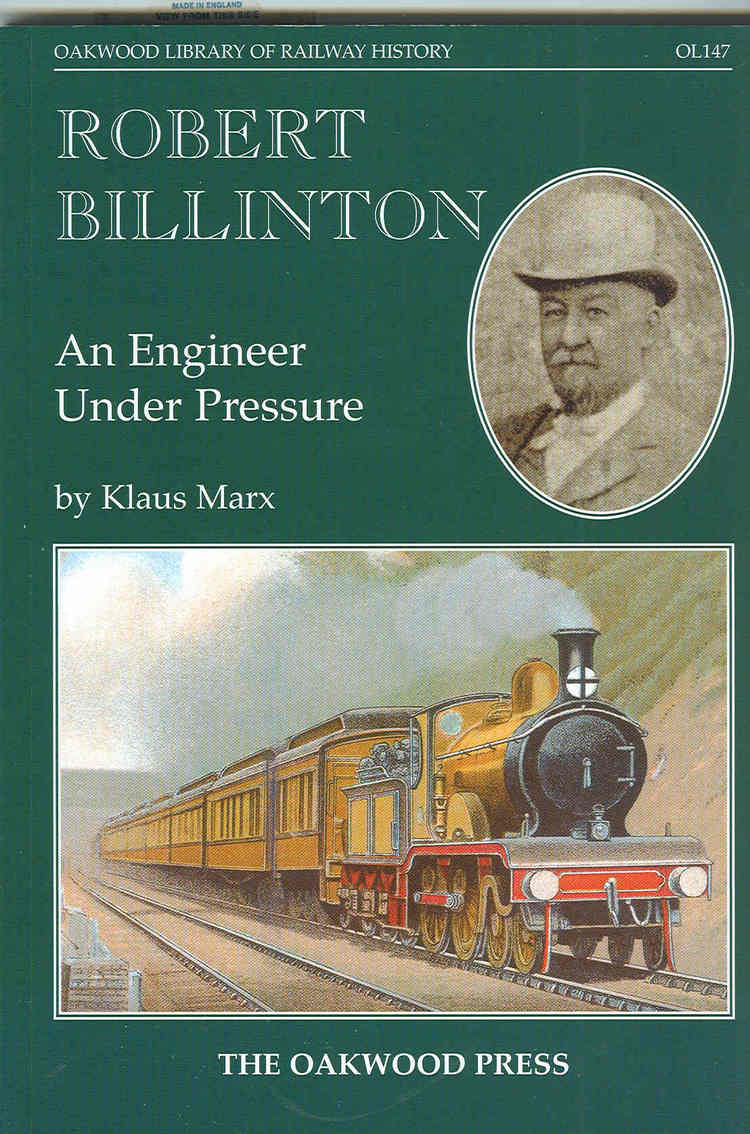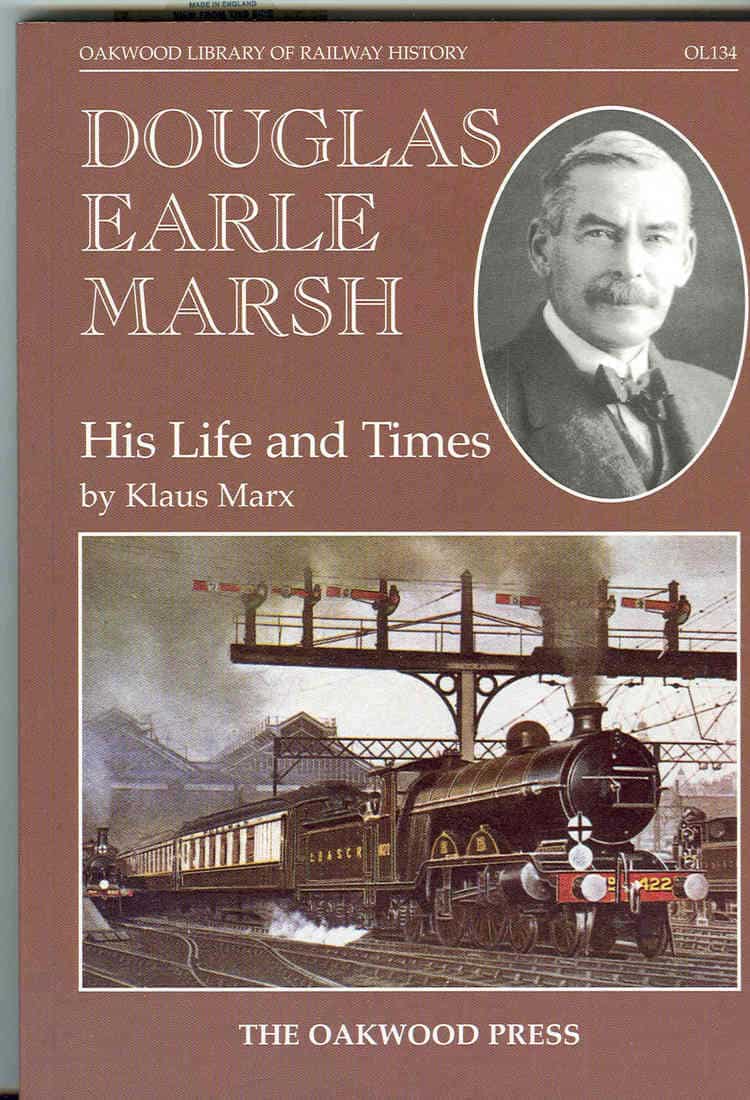 |
Lawson Boskovsky (Butzkopfski) Billinton |

Later Brighton locomotive engineers:
Billinton: father & son; Marsh
, B.K. Field & John Pelham
Maitland
 |
Lawson Boskovsky (Butzkopfski) Billinton |
Born on 4 February 1882 (Marx): Marshall was unable to supply a precise date of birth . Marx explains the unusual forenames: Lawson was an early motor engineer and friend of his father, and the middle name reflected the mother's Polish maiden name which carries many different spellings!. He was known to intimates as Laurie.:Educated Tonbridge School: served apprenticeship under father. Inspector of materials on LB&SCR. In charge of New Coss depot. Appointed Superintendent in .Locomotives designed included E2 0-6-0T, K class 2-6-0 which introduced Belpaire fireboc to LBSCR, L class 4-6-4T where measures had to be taken to counter surging in tanks. Fred Rich (Yesterday once more page 71) records that Billinton joined the footplate of an I3 to jourrney from London to Brighton and that he regularly travelled this way. Comprehensive biography by Marx, reviewed by Phil Atkins in Backtrack, 2009, 23, 446. Paragraph in Loco. Rly Carr. Wagon Rev. 1926, 32, 122 states appointed general managaer of R.Y. Pickering in 1926: not noted by Marx...
Papers
Steam as a motive power on railways. Rly Engr, 1931, 52,
450-1.
Comparison of steam and electric traction. The author favoured the
former.
Patent
7463/1909 A cinematograph producing and reproducing machine for
home use, containing the idea for a living-picture newspaper. Application
28 September 1909. Published 3 March 1910. with Thomas Sapt.
 |
Robert John Billinton |
Robert Billinton was born on 5 April 1845 in Wakefield, Yorkshire.
He served, a part-apprenticeship from 1859-63 at the works of William Fairbairn
& Sons in Manchester, and the remaining two years of his time was spent
with Messrs Simpson & Co of Pimlico, London. Following two years with
R. Child of Wakefield, engaged in mining and civil engineering, he became
Assistant Manager at Messrs Munro, Walker & Easton of Sheffield, builders
of locomotives (not listed by Lowe) and
general machinery, in June, 1866.
In 1870 he was appointed assistant to
Stroudley on the LB&SCR, in charge of the design
of locomotives, carriages and wagons, and other rolling stock, where he stayed
until his appointment on the Midland under Johnson in
November, 1874, at a salary of £225 a year, and with a promise of a
further £25 the following Ju1y.
[Radford]
Following the sudden death of Stroudley he became Locomotive, Carriage,
Wagon and Marine Superintendent of the LBSCR He was planning to introduce
the 4-6-0 type at the time of his death on 7 November 1904. He was a Member
of the Civils and Mechanicals, the Institute of Naval Architects and of the
Iron & Steel Institute.
Comprehensive biography by
Marx, reviewed by Phil Atkins
in Backtrack, 2009, 23, 446...
 |
Douglas Earle Marsh |
Locomotive Superintendent of the London, Brighton, & South Coast
Railway from 1905 to 1912. According to
Marshall Marsh was born in Aylsham, Norfolk,
in 1862 and died in Bath on 25 May 1933. He was educated at Brighton College
and at University College, London, Douglas Earle Marsh began his railway
career with the Great Western at Swindon, and later went to the Great Northern,
where he was assistant chief mechanical engineer under Ivatt. Having participated
in the design of the Ivatt Atlantics, he built some locomotives of this type
for the LBSCR. He earned the gratitude of commuters by beginning the installation
of steam-heating equipment in non-main-line passenger engines, thereby soothing
the acrimonious daily quest of passengers for footwarmers on wintry LBSC
station platforms. His great moment in locomotive design came in 1907, when
his draughtsman [Field] persuaded him to fit a Schmidt
superheater to a new 4-4-2 tank locomotive. At the time only the Lancashire
& Yorkshire Railway had taken this particular plunge in Britain, and
the results were still uncertain. Marsh's tank locomotive immediately registered
a twenty-five per cent decrease in coal consumption. When one of these
locomotives was tried on the LNWR and ran ninety miles without taking water,
the LNWR took notice and was soon fitting its own locomotives with Schmidt
superheaters. This more or less assured the acceptance of superheating in
Britain.
Ellis observes that: "Something went wrong with Douglas Earle Marsh
in 1911. He went on indefinite sick leave... At the end of the year Mr Marsh
resigned on the grounds of ill health. His departure from office was considered
sympathetically by the ARLE (Hughes) when
some Members considered that he should have been allowed to remain in Membership.
He survived for many years after. In Marsh's last active year with the company
a canard was started by the gutter Sunday newspapers, about a missing locomotive,
which it was alleged, he had never built, though by some means or other,
he was supposed to have pocketed the money. On page 35
Ellis refers to Number 36, Abergavenny
being a "ghost Atlantic".
Patent
28252/1910 Improvements in and relating to Systems and Apparatus
for Washing Out and Filling Locomotive Boilers and the like. Application
5 December 1910. Published 30 November 1911.
Association of Railway Locomotive Engineers
(via Hughes)
Meeting November 1910: Marsh said that he had built fifteen engines
fitted with superheater and feed water heating at an additional cost of
£120 each, including the royalty, and had found a saving of 40% in water,
in a chalk district. Boiler pressure was reduced from 180 to 150 lb/sq in,
the superheat enabling the steam temperature to be raised to 630°F.
Also, the superheater formed a useful spark arrestor.
See: Locomotive Carriage and Wagon Review, Aug. 1945.
Marx, Klaus. Douglas
Earle Marsh: his life and times. Oakwood Press, 2005. 160pp
Best known for the celebrated Brighton Atlantics and also the `I3` class
4-4-2 tank engines which put the LNWR to shame on tests with the `Sunny South
Express`, Marsh was also responsible for some less successful creations.
Less well known are his dismal relations with the Brighton workforce and
the official cover up of his dismissal due to a number of irregularities.
The straightforward mechanical details of the various locomotive classes
has been told before and are summarised briefly This biography deals with
the man himself, his personality and performance, `warts and all`, and yet
despite his several shortcomings seeks to be fair to a man who started at
Brighton on the wrong foot, he himself admitting that, when he had only been
there two days, the men wished to see the back of him. [Publisher's
blurb]
Born in about 1866 Field was educated at Dulwich College and Heidelberg University before being apprenticed to James Stirling at Ashford (Nock). In 1895 he was appointed Chief Locomotive Draughtsman at Ashford Works. He became Works Manager at Stoke to NSR in 1899 and Works Manager at the Motor Manufacturing Company in Coventry in 1903 (it is obvious that his patents date from this period). In 1907 he returned south to become Chief Locomotive Draughtsman at Brighton where he assisted Marsh in introducing the Schmidt superheater to the I3 class and Lawson Billinton in the design of the K class 2-6-0 and 4-6-4Ts. He became Works Manager at Brighton in 1912. On the formation of the Southern Railway he became Works Manager at Brighton works. He retired in 1924 and devoted himself to model locomotive engineering. Obituary 1941. See also Phil Atkin's review of biography by Marx on Lawson Billinton...
Patents
14488/1906 Improvements in self-propelled vehicles that are to
act as tractors. Application: 25 June 1906. Published: 13 June 1907.
13365/1903 Improved arrangement of valves for draining or relieving the
pressure in the cylinders and valve chest of an elastic fluid pressure
engine. Application: 15 June 1903. Published: 15 October 1903.
Fred Rich (Yesterday once more) devotes an entire Chapter to the devout High Church Anglican, mildly eccentric (in dress) Maitland who was born in Croydon on 31 March 1890 and died in Haywards Heath in July 1964. Rich constructed the biography from material supplied by Driver George Washington who had met and been befriended by Maitland whilst he was working in Brighton Works. Maitland had started his premium apprenticeship under Douglas Earle Marsh on 4 January 1907. He was in charge of the sheds at Newhaven (from 1924), at Liitlehampton and Bognor (from 1929), at the new mpd at Norwood Junction from 1935 and was Running Shed Superintendent at Nine Elms from 1939 until his retirement. He was one of the founders of the Institution of Locomotive Engineers and presented four early papers. He was awarded the MBE for his work in assisting the dispersal of the troops from Dunkirk. Rich notes that he was an excellent linguist and highly competent archaeologist. His father may have been a medical man: Lytton Pelham Maitland wrote on medical subjects, and an earlier Pelham Maitland wrote extensively on religeous topics..
Maitland was a founder Member of the Institution of Locomotive Engineers and presented its first and thirteenth papers.
2011-07-01